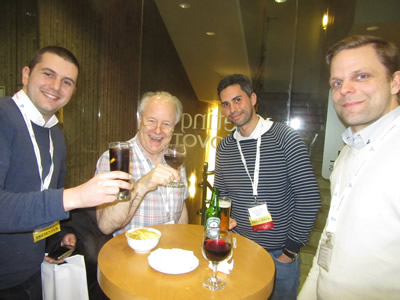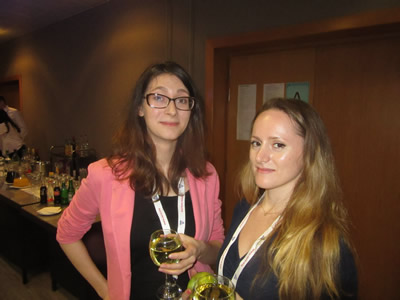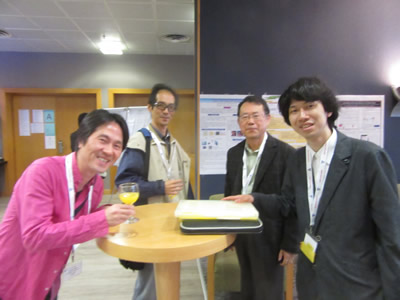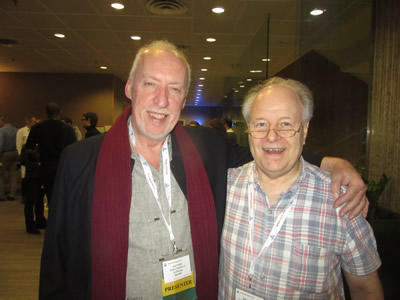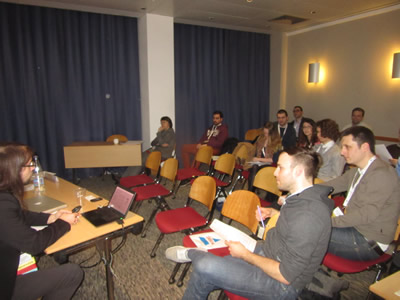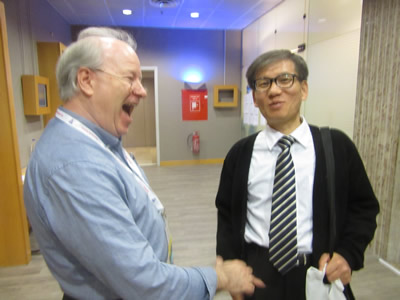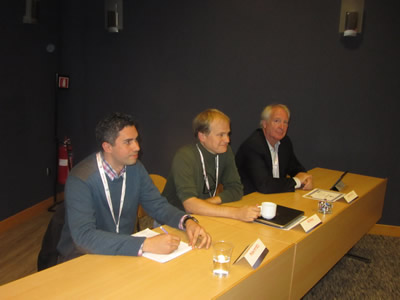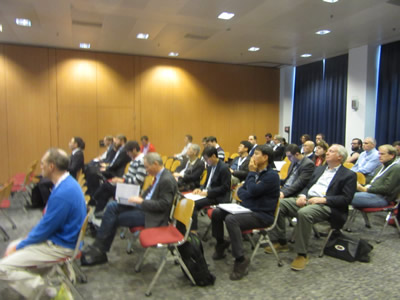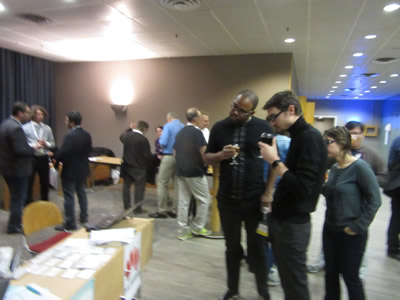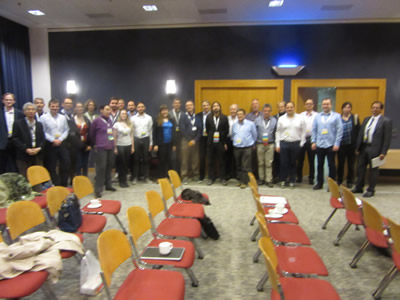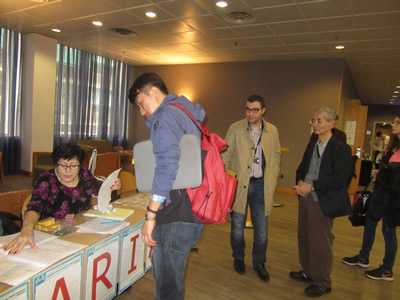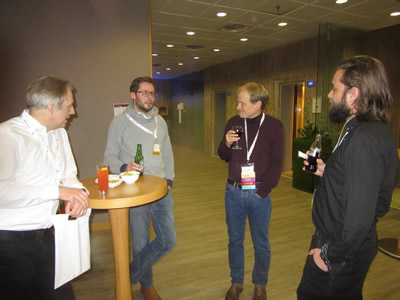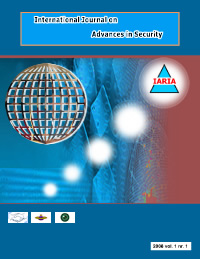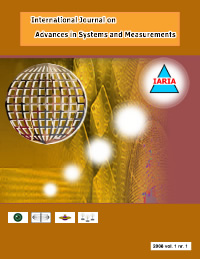ICQNM 2021 - The Fifteenth International Conference on Quantum, Nano/Bio, and Micro Technologies
November 14, 2021 - November 18, 2021
ICQNM 2021: Call for Papers
Onsite and Online Options: In order to accommodate a large number of situations, we are offering the option for either physical presence or virtual participation (pdf slides or pre-recorded videos).
Quantum technologies and nano technologies have a great potential to transform communications telecommunications infrastructure and communication protocols, and computers and networking devices. Nanotechnologies and micro-technologies already made their mark on smart materials, nano-medicine, nano-devices, molecular manufacturing, biotechnology, metrology, airspace.
The advancements in material science and computer science have allowed the building, launching and deploying of space exploration systems that continually do more and more as they become smaller and lighter. As an example, carbon nano-tubes have been created that are 250 times stronger than steel, 10 times lighter, and transparent. Similar advances are occurring in glass, plastics and concrete. Spacecraft are being launched, with hulls that are composed of carbon fibers, a light weight high strength material.
Swarms is another concept of nano-robotics; swarms act in unison like bees. They theoretically will act as a flexible cloth like material, as strong as diamond. Interplanetary exploration can be foreseen as being carried on by nano-robots as well.
Electronic devices, medicine, environment, metrology, aerospace programs, clothes and materials, telecommunications, cryptography, semiconductors, manufacturing, and other domains are impacted by the progress on the areas mentioned above. Particularly, micro imaging, nano-medicine: (drug delivery; nano-particles i.e. viruses; proteins.), bio-nanostructures: (nano-tubes, nano-particles), microsystems, micro fluidics: (including nano-fluidics, modeling; fabrication and application), micro instrumentation / implantable microdevices (miniaturized bio-electronic systems etc.) and micro sensors benefits from the progress on quantum, nano and micro technologies.
The International Conference on Quantum-, Nano- and Micro-technologies (ICQNM 2021) continues a series of events covering particularly promising theories and technologies. The conference covers fundamentals on designing, implementing, testing, validating and maintaining various kinds of materials, systems, techniques and mechanisms related to quantum-, nano- and micro-technologies.
Developing nanoscale-manufactured robots presents fabrication and control challenges. The evolution of mechatronics system and robotic system requires advanced functions for control. Special methods and technologies have been developed to design, analyze, build, controls, and apply micro/nano-robotic systems for biotechnology, medical, information technology, materials, etc. A particular application of nano-robots would be in carrying out projects in hostile environments, utilizing local materials and local energy. Ultra-miniature robotic systems and nano-mechanical devices will be the biomolecular electro-mechanical hardware of future manufacturing and biomedical industry.
Nowadays, there are tremendous attempts to develop new bio-molecular machines, components that can be assembled in nano-devices. Bio-robotics entities are able to manipulate the nano-world components, convey information from the nano/nano to the nano/macro world and navigate at the nano-environment level. Additionally, they are able to self replicate, leading to the bio-robot factory. Protein-based nano-motors and nano-robots, as well as biomolecular components interfaces.
Quantum cryptography uses the uncertainty principle of quantum physics to provide a safe but public means for transmitting vital, secret information. A quantum public key distribution system depends on the uncertainty principle to ensure secrecy. Special protocols correlations and composability algorithms ensure similar functionality as in non-quantum systems. The security related tracks cover a series of events focusing on quantum security aspects. On the quantum protocol side, automated proofs of security and probabilistic model-checking methods have been suggested. Research teams focus on quantum key distribution and aspects related to key composability and correlations. Limitations are mainly related to physical devices and polarization control.
Classical methods for reasoning on security, discovering security vulnerabilities and building secure quantum cryptographic systems must be revisited.
We solicit both academic, research, and industrial contributions. We welcome technical papers presenting research and practical results, position papers addressing the pros and cons of specific proposals, such as those being discussed in the standard fora or in industry consortia, survey papers addressing the key problems and solutions on any of the above topics short papers on work in progress, and panel proposals.
Industrial presentations are not subject to the format and content constraints of regular submissions. We expect short and long presentations that express industrial position and status.
Tutorials on specific related topics and panels on challenging areas are encouraged.
The topics suggested by the conference can be discussed in term of concepts, state of the art, research, standards, implementations, running experiments, applications, and industrial case studies. Authors are invited to submit complete unpublished papers, which are not under review in any other conference or journal in the following, but not limited to, topic areas.
All topics and submission formats are open to both research and industry contributions.
ICQNM 2021 conference tracks:
QNM Communications and Computation
Molecular; bacterial; quantum; nano-wireless; terahertz; neuronal; nano-scale; ribo-computing; computational nano-robotics
QNM Networks
Nano-networks; Internet of nano-Things (IonT); Analog synthetic gene networks; Bio-nanostructures (nano-tubes, nano-particles)
QNM Materials
Graphene and nanotubes; Biosensing (nano)materials and interfaces; Interconnect materials, technologies, and applications; Materials and technologies for package-level thermal management; Nano-films; Porous and pin-fin surfaces; Electrospun polymer fibers; Polymer/Clay nano-composites; Optofluidics; Silicon nano-wires; Wide band-gap dielectrics; Nano-particles i.e., viruses; proteins; Polymeric composites; Ferromagnet thin film heterostructures; Superfluid film; Iron-based superconductors; Carbon nano-tubes and biological objects (DNA, RNA, cell, tissue, etc.); Biomolecular components interfaces (DNA joints and carbon-nanotube rigid links); Self-healing materials; Superconductivity; Superconductors; Supercurrents
QNM Sensing
On-chip trace-gas spectroscopy; Nano/Biosensing; Micro-fabricated sensors; 3D-printed sensors; 3-D micro-structuring; Nano/micro scale thermal radiation; Nano/micro scale thermal radiation;
QNM Energy
Energy detection in THz nano-networks; Pyroelectric energy harvesting; Fuel cells and energy storage devices; Energy saving and optimal consumption
QNM Security/Safety
Quantum security; Quantum cryptography; Quantum key distribution, Near-field security; Near-field safety; Defense and homeland security; Security at QNM level; Safety at QNM level
QNM Robotics
Microrobotics, Microscale-control; Micro-manipulation; Autonomous and teleoperated nano-manufacturing systems; Biologically inspired miniature space robots and micro-/nano-systems; Nano-particles and nano-wires; Micro-/nano-electromechanical systems; Bio-nano robots; Nano-robots and nano-assembly; Nano-robots control design; Computational nano-robotics; Nano-robotics simulation; Nano-robotics communication; Evolutionary nano-robots; Cellular robotics and micro/nano robotics systems; Viral proteins motors; Protein-based nano-motors and nano-robots
QNM Fluidics
Discrete microfluidics, Hydrodynamic microfluidity, Nano fluidics and robotics; Micro-fluidics (including nano-fluidics, modeling; fabrication and application); Fluid mechanics and modeling; Microfluidics (DNA, lab-on-a-chip, lithography, etc.); Fluidics design and assembly; Hybrid devices, microfluidic packaging; Digital microfluidics; Capillary electrophoresis; Microfluidic fuel cells; Cell soring and handling; Magnetic nanofluids; Transport in nanofluids
QNM Systems, Devices and Properties
Performance of nano/micro systems; Reliability of nano devices, circuits and systems; Modeling and simulation of nano devices; Design methodologies and tools for nano circuits and systems; Testing of nano circuits and systems; Nano tools; Integrated nano systems, Micro propulsion systems; Factory and micro assembly; Quantum memory; Nanophotonic, Smart antennas, Micro/nano resonators; Bio-molecular machines; actuators; transducers; Micro-instruments; Ribo-computing devices; Mechanical and thermal properties; Specifics on evaporation and condensation; Crystallization; Elasticity and performance; Adhesion measurements; Specific heat oscillations; Performance models of nano- and bio-robots; Limitations of nano-robot colonies
QNM Applications
Biomedical applications, nano/micro systems, Quantum simulation tools, Quantum teleportation, Nano-lithography and manufacturing; Nano-tribometry; Scanning probe microscopy; Near-field microscopy; System integration - macro/micro/nano systems; 3D micro-structuring; Nano-medicine (i.e., drug delivery); Micro instrumentation / implantable micro-devices (miniaturized bio-electronic systems etc.); Micro imaging; Nano measurements (optical interference); Nano biotechnology; Aerospace and automotive; Molecular manufacturing; Quantum Nano metrology; Aerospace applications; Data-storage techniques; Defense applications; Nano-robots in nano-medicine; Surgical micro-robots inside the human body; Nano-robotics and biomedical applications; Medical nano-robots feasibility
Deadlines:
Submission | Sep 25, 2021 |
Notification | Oct 12, 2021 |
Registration | Oct 25, 2021 |
Camera ready | Nov 01, 2021 |
Deadlines differ for special tracks. Please consult the conference home page for special tracks Call for Papers (if any).
INSTRUCTION FOR THE AUTHORS
Authors of selected papers will be invited to submit extended versions to one of the IARIA Journals.
Publisher: XPS (Xpert Publishing Services)
Archived: ThinkMindTM Digital Library (free access)
Prints available at Curran Associates, Inc.
How to submit to appropriate indexes.
Only .pdf or .doc files will be accepted for paper submission. All received submissions will be acknowledged via an automated system.
Contribution types
- regular papers [in the proceedings, digital library]
- short papers (work in progress) [in the proceedings, digital library]
- ideas: two pages [in the proceedings, digital library]
- extended abstracts: two pages [in the proceedings, digital library]
- posters: two pages [in the proceedings, digital library]
- posters: slide only [slide-deck posted on www.iaria.org]
- presentations: slide only [slide-deck posted on www.iaria.org]
- demos: two pages [posted on www.iaria.org]
FORMATS
Only .pdf or .doc files will be accepted for paper submission. All received submissions will be acknowledged via an automated system.
Final author manuscripts will be 8.5" x 11", not exceeding 6 pages; max 4 extra pages allowed at additional cost.
Helpful information for paper formatting for MS Word can be found here.
There is a community provided LaTeX template: the CTAN package iaria (with full IARIA formatting rules, including IARIA citation style, but for providing citation style it is tightly bound to pdflatex+biblatex+biber). In addition, there is also iaria-lite (not bound to pdflatex+biblatex+biber, but compatible with any TeX stack; thus, it cannot provide the IARIA citation formattings, but only the titlepage and content-related IARIA formatting rules). Based on the iaria package, there is a minimal working example as Overleaf template. When you are using the LaTeX templates, please still adhere to the additional editorial rules.
Slides-based contributions can use the corporate/university format and style.
Your paper should also comply with the additional editorial rules.
Once you receive the notification of contribution acceptance, you will be provided by the publisher an online author kit with all the steps an author needs to follow to submit the final version. The author kits URL will be included in the letter of acceptance.
We would recommend that you should not use too many extra pages, even if you can afford the extra fees. No more than 2 contributions per event are recommended, as each contribution must be separately registered and paid for. At least one author of each accepted paper must register to ensure that the paper will be included in the conference proceedings and in the digital library, or posted on the www.iaria.org (for slide-based contributions).
CONTRIBUTION TYPE
Regular Papers (up to 6-10 page article -6 pages covered the by regular registration; max 4 extra pages allowed at additional cost- ) (oral presentation)
These contributions could be academic or industrial research, survey, white, implementation-oriented, architecture-oriented, white papers, etc. They will be included in the proceedings, posted in the free-access ThinkMind digital library and sent for indexing. Please submit the contributions following the instructions for the regular submissions using the "Submit a Paper" button and selecting the appropriate contribution type. 12-14 presentation slides are suggested.
Short papers (work in progress) (up to 4 pages long) (oral presentation)
Work-in-progress contributions are welcome. These contributions represent partial achievements of longer-term projects. They could be academic or industrial research, survey, white, implementation-oriented, architecture-oriented, white papers, etc. Please submit the contributions following the instructions for the regular submissions using the "Submit a Paper" button and selecting the contribution type as work in progress. Contributors must follow the conference deadlines, describing early research and novel skeleton ideas in the areas of the conference topics. The work will be published in the conference proceedings, posted in the free-access ThinkMind digital library and sent for indexing. For more details, see the Work in Progress explanation page. 12-14 presentation slides are suggested.
Ideas contributions (2 pages long) (oral presentation)
This category is dedicated to new ideas in their very early stage. Idea contributions are expression of yet to be developed approaches, with pros/cons, not yet consolidated. Ideas contributions are intended for a debate and audience feedback. Please submit the contributions following the instructions for the regular submissions using the "Submit a Paper" button and selecting the contribution type as Idea. Contributors must follow the conference deadlines, describing early research and novel skeleton ideas in the areas of the conference topics. The work will be published in the conference proceedings, posted in the free-access ThinkMind digital library and sent for indexing. For more details, see the Ideas explanation page. 12-14 presentation slides are suggested.
Extended abstracts (2 pages long) (oral presentation)
Extended abstracts summarize a long potential publication with noticeable results. It is intended for sharing yet to be written, or further on intended for a journal publication. Please submit the contributions following the instructions for the regular submissions using the "Submit a Paper" button and selecting the contribution type as Extended abstract. Contributors must follow the conference deadlines, describing early research and novel skeleton ideas in the areas of the conference topics. The work will be published in the conference proceedings, posted in the free-access ThinkMind digital library and sent for indexing. 12-14 presentation slides are suggested.
Posters (paper-based, two pages long) (oral presentation)
Posters are intended for ongoing research projects, concrete realizations, or industrial applications/projects presentations. The poster may be presented during sessions reserved for posters, or mixed with presentation of articles of similar topic. A two-page paper summarizes a presentation intended to be a POSTER. This allows an author to summarize a series of results and expose them via a big number of figures, graphics and tables. Please submit the contributions following the instructions for the regular submissions using the "Submit a Paper" button and selecting the contribution type as Poster Two Pages. Contributors must follow the conference deadlines, describing early research and novel skeleton ideas in the areas of the conference topics. The work will be published in the conference proceedings, posted in the free-access ThinkMind digital library and sent for indexing. 8-10 presentation slides are suggested. Also a big Poster is suitable, used for live discussions with the attendees, in addition to the oral presentation.
Posters (slide-based, only) (oral presentation)
Posters are intended for ongoing research projects, concrete realizations, or industrial applications/projects presentations. The poster may be presented during sessions reserved for posters, or mixed with presentation of articles of similar topic. The slides must have comprehensive comments. This type of contribution only requires a 8-10 slide-deck. Please submit the contributions following the instructions for the regular submissions using the "Submit a Paper" button and selecting the contribution type as Poster (slide-only). The slide-deck will be posted, post-event, on www.iaria.org.
8-10 presentation slides are suggested. Also a big Poster is suitable, used for live discussions with the attendees, additionally to the oral presentation.
Presentations (slide-based, only) (oral presentation)
These contributions represent technical marketing/industrial/business/positioning presentations. This type of contribution only requires a 12-14 slide-deck. Please submit the contributions following the submission instructions by using the "Submit a Paper" button and selecting the contribution type as Presentation (slide-only). The slide-deck will be posted, post-event, on www.iaria.org.
12-14 presentation slides are suggested.
Demos (two pages) [posted on www.iaria.org]
Demos represent special contributions where a tool, an implementation of an application, or a freshly implemented system is presented in its alfa/beta version. It might also be intended for thsoe new application to gather the attendee opinion. A two-page summary for a demo is intended to be. It would be scheduled in special time spots, to ensure a maximum attendance from the participants. Please submit the contributions following the submission instructions by using the "Submit a Paper" button and selecting the contribution type as Demos. The Demos paper will be posted, post-event, on www.iaria.org.
Tutorial proposals
Tutorials provide overviews of current high interest topics. Proposals should be for 2-3 hour long. Proposals must contain the title, the summary of the content, and the biography of the presenter(s). The tutorial slide decks will be posted on the IARIA site.
Please send your proposals to tutorial proposal
Panel proposals
The organizers encourage scientists and industry leaders to organize dedicated panels dealing with controversial and challenging topics and paradigms. Panel moderators are asked to identify their guests and manage that their appropriate talk supports timely reach our deadlines. Moderators must specifically submit an official proposal, indicating their background, panelist names, their affiliation, the topic of the panel, as well as short biographies. The panel slide deck will be posted on the IARIA site.
Please send your proposals to panel proposal
